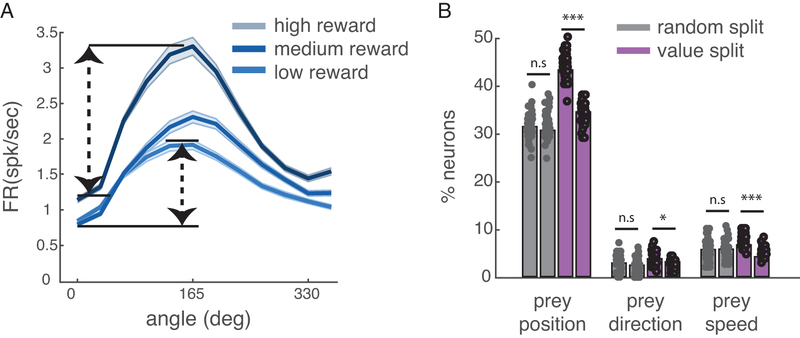Figure 6.
Modulatory effect of reward size on tuning for prey variables. (A) Responses of an example neuron selective for the angle between self and prey; changes in the reward size of prey (divided into three bins post-hoc) appear to change the gain and not the offset of the neurons; that is, reward interacts multiplicatively with angle. Shading: standard deviation. (B) This pattern is also observed in the population. The proportion of neurons significantly tuned for prey variables (prey position, prey direction, and prey speed) when splitting data randomly (grey bar) or according to the value of pursued prey (purple bar). The difference of value split was significant (p = 0.0221 for prey speed, and p < 0.001 for other prey variables). Precise p-value was p = 0.1887 (prey position), p=0.1516 (prey direction), p = 0.7039 (prey velocity). Significance test: two-tailed t-test. The measure of center is mean value computed by a 50x bootstrap; error bars: standard deviation. Each filled circle indicates a single bootstrap sample.

